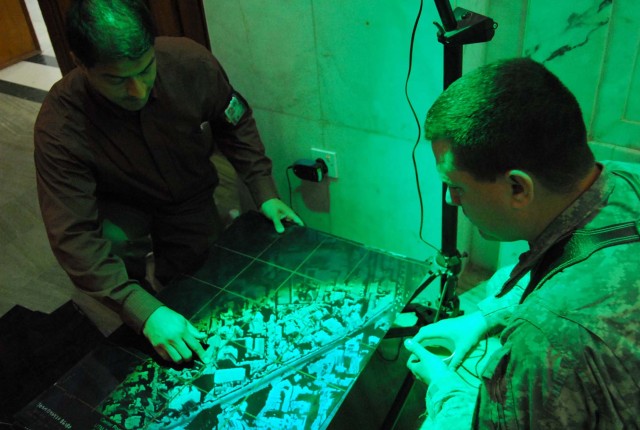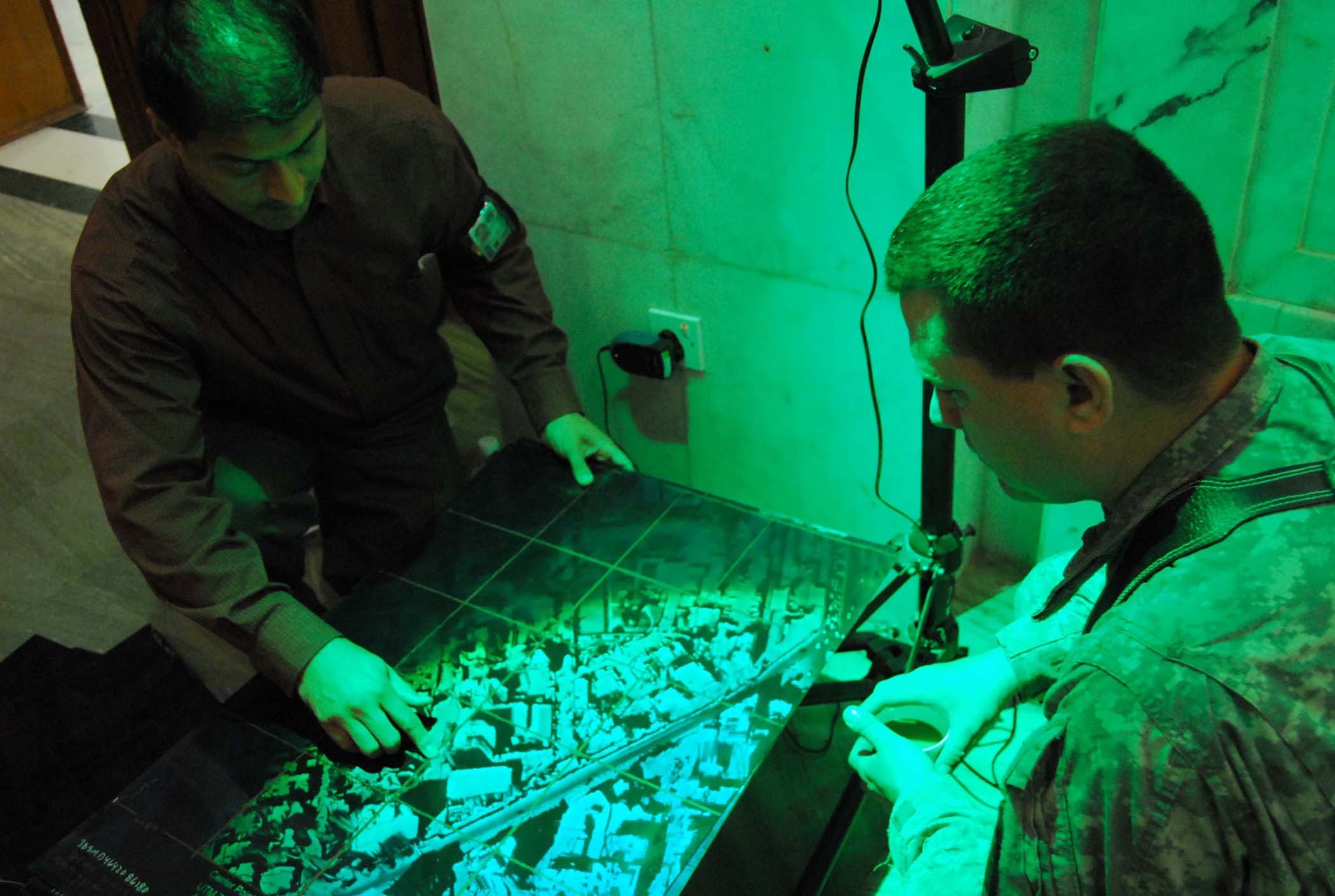
Troops in the field need every tool available to give them the advantage over the enemy. Planning for a mission is a crucial part of gaining the advantage. New holographic imaging technology is helping servicemembers in the field plan more accurately which leads to mission success and troop safety.
The holographic images, known as the Tactical Battlefield Visualization project, were created to augment current map systems by offering a three dimensional view of the battlespace, said Victor Villavicencio, liaison, Army DCS-G2. The enhanced images allow troops to judge line-of-sight, slope and the heights for building and underpasses.
"This project helps the troop by giving them the capability to fully experience the 'common operating picture'," Villavicencio explained. Some areas where these images can assist include mission planning and more accurate rehearsal, ingress and egress route planning, intelligence and reconnaissance.
"I think this technology would be really helpful with navigating in three dimensions," said Capt. Norman Adamson, Joint Headquarters Army Advisory Transition Teams. "It gives you a view point you can't see on an actual map."
The maps are also used in training Iraqi counterparts, Villavicencio added. Since the images are unclassified, troops can overcome the language and experience barrier often encountered when using traditional maps.
Through the TBV project, images of specific areas are requested through the local G2 liaison and the request is forwarded to a production location in Austin, Texas. The images of the area, usually from Army Topographic Engineering Center, are burned into a sheet of photopolymer film and laminated. The entire creation process takes from three to four hours. The durable images can then be viewed using a special green light indoors or in direct sunlight outdoors, Villavicencio said.
The TBV products are currently in use in both Iraq and Afghanistan, Villavicencio said. They can be requested through forms located on the SIPR portal, at no cost to the unit, by anyone E4 or above and are considered theater provided equipment, he added. Since the TBV program began, more than 4,500 maps have been shipped to troops in combat zones. The average wait for an image is three weeks from the date of the request approval, Villavicencio said.

Social Sharing